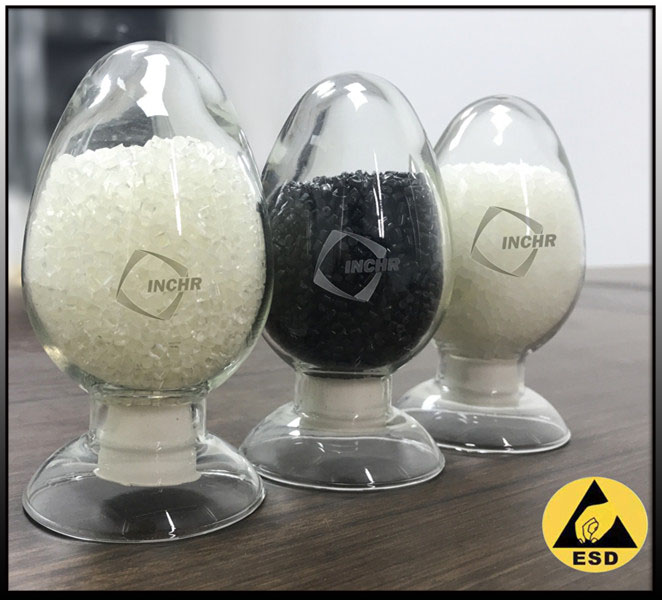Walk into any modern electronics manufacturing facility, assembly line, or repair station, and you’ll find a silent, ubiquitous hero: ESD plastic. From the trays holding delicate microchips to the workbenches where smartphones are assembled, these specialized materials aren’t just convenient – they’re absolutely critical. But what makes ESD plastics so indispensable and widely adopted in this hyper-sensitive sector? Let’s delve into the key reasons behind their dominance.
1. Neutralizing the Invisible Profit Killer: Static Discharge (ESD)
Electronics live in fear of the tiny zap. Electrostatic Discharge (ESD), often imperceptible to humans, can instantly fry a microchip, degrade a sensor, or cause latent damage leading to premature failure weeks or months later. Standard plastics are notorious static generators and insulators – the last thing you want near sensitive components. ESD plastics are engineered specifically to:
Control Static Generation: They resist building up charges through friction (tribocharging) during handling and movement.
Safely Dissipate Charges: They provide a controlled path for static electricity to flow safely to ground, preventing sudden, damaging discharges. This happens at a safe rate (static dissipative range, typically 10^6 – 10^11 ohms), avoiding the risks of rapid discharge (conductive) or no discharge (insulative).

2. Protecting Product Integrity & Boosting Manufacturing Yields
Every component damaged by ESD represents lost money – wasted parts, rework costs, scrap, and potential delays. ESD plastics directly protect the bottom line by:
Preventing Catastrophic Failures: Stopping immediate component death on the production line.
Eliminating Latent Defects: Preventing the hidden damage that escapes initial testing but causes field failures later – the most costly type of ESD damage, damaging brand reputation and incurring warranty costs.
Minimizing Upsets: Reducing temporary malfunctions during testing or assembly that slow down processes. By safeguarding components at every touchpoint (trays, fixtures, tools, surfaces, shelving, carts), ESD plastics significantly improve overall yield rates and product reliability.
3. Enabling Safe Handling & Streamlined Workflows
Electronics manufacturing involves countless handling steps. ESD plastics provide the safe foundation for these processes:
Safe Work Surfaces: ESD-safe workbenches and mats protect assemblies during manual work like soldering, inspection, and repair.
Secure Transport & Storage: ESD totes, bins, and trays safely move components between stations and store them without risk.
Durable Fixtures & Tooling: Jigs, holders, and machine components made from ESD plastics ensure components aren’t endangered during automated processes.
Operator Safety: Reducing static minimizes shocks to personnel and prevents accidental ignition in rare flammable environments.
This creates a controlled ESD Protected Area (EPA), allowing efficient workflow without the constant fear of static-induced damage slowing things down or requiring excessive re-testing.
4. Durability Meets Specific Performance Needs
ESD plastics aren’t a one-trick pony. They are formulated from robust base resins (like Polycarbonate, ABS, PP, Polyethylene, Nylon, or high-performance polymers like PEEK) infused with static-control additives or fillers. This means they offer:
Mechanical Strength & Impact Resistance: Crucial for reusable trays, tooling, and fixtures that endure daily use.
Chemical Resistance: Withstanding common cleaners, fluxes, and solvents used in electronics manufacturing.
Dimensional Stability: Maintaining shape under load and temperature variations common in assembly processes.
Customizability: Available in various colors and formulations (e.g., cleanroom-compliant, high-temperature resistant, FDA-compliant for specific sub-assemblies).
5. Supporting Miniaturization and Advanced Technologies
As electronics shrink (think smartphones, wearables, IoT devices) and components become more densely packed and inherently more sensitive, the threat posed by even smaller ESD events increases dramatically. ESD plastics are essential enablers of this miniaturization trend:
Protecting Finer Geometries: Tiny transistors and traces are far more vulnerable to ESD damage than older, larger components.
Enabling Advanced Packaging: Handling delicate wafer-level packaging or 3D chips requires the utmost static control provided by specialized ESD materials.
Safeguarding Sensitive Sensors: MEMS sensors (gyroscopes, accelerometers, microphones) and optoelectronics are highly susceptible to ESD.
6. Integrating into Holistic ESD Control Programs
ESD plastics don’t work in isolation. Their popularity stems from being a fundamental, reliable component within broader ESD control programs mandated by standards like ANSI/ESD S20.20 or IEC 61340-5-1. They seamlessly integrate with:
Personnel Grounding: Wrist straps and footwear connect operators to the same ground as ESD worksurfaces.
Proper Grounding: All ESD items (surfaces, equipment) are bonded to a common ground point.
Ionization: Neutralizes charges on necessary insulative items.
ESD Protective Packaging: For safe storage and transport outside the EPA.
Conclusion: More Than Just Plastic – A Foundational Investment
The electronics industry’s reliance on ESD plastics isn’t a passing trend; it’s a fundamental requirement driven by physics and economics. By effectively neutralizing the pervasive threat of electrostatic discharge, these engineered materials:
Protect valuable components from invisible damage.
Significantly increase manufacturing yields and reduce costly rework/scrap.
Enhance product reliability and reduce field failures/warranty claims.
Enable safe, efficient workflows with durable, purpose-built handling solutions.
Support the ongoing march of miniaturization and advanced electronic technologies.
In a world where a single static spark can destroy a high-value component or undermine product quality, ESD plastics are the essential, reliable shield that allows the electronics industry to innovate and produce with confidence. Investing in the right ESD plastic solutions isn’t just about buying material; it’s about safeguarding quality, reputation, and profitability.




